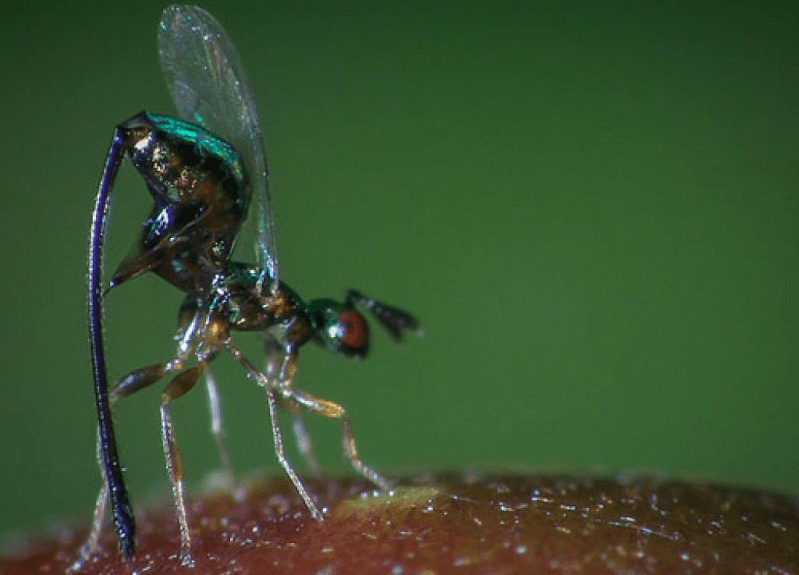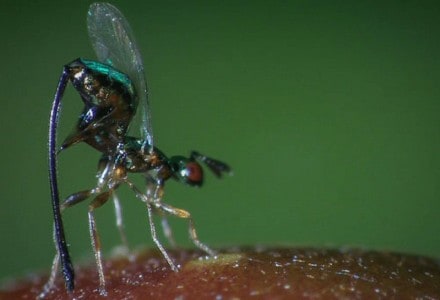
Fig Wasp Facts
- Firstly, the term Fig Wasp refers to any member species of a specific polyphyletic group of wasps. Furthermore, these display a rather remarkable form of complete coevolution with the fig tree.
- Most notably, the survival of each species in this group remains completely dependent upon the fig tree. This occurs because the female simply will not lay eggs in any other place.
- As part of the coevolution, the member species of this group represent the only insects that fertilize the fig tree. Therefore, the two species have become entirely dependent upon each other.
- The Fig Wasp is the only insect that pollinates the fig tree.Click To Tweet
Related Articles
Jewel Wasp Bald-Faced Hornet Cuckoo Wasp
Photographer: P. Zborowski
CC License: https://bit.ly/1E6HPMf
Fig Wasp Physical Description
Firstly, the fascinating Fig Wasp displays an unusual form of sexual dimorphism. But, in itself, this fact remains unsurprising. However, in this particular species, it appears in an uncommon fashion.
First of all, the females have the physical appearance common to wasps. In most species, however, the males remain completely wingless. Aside from the lack of wings, the males possess the same physical characteristics as the female.
Also, the exact coloring understandably varies somewhat between the different types. But, yellow and black predominate among them. This trait seems to also be prevalent among many related creatures.
- Kingdom: Animalia
- Phylum: Arthropoda
- Class: Insecta
- Order: Hymenoptera
- Superfamily: Chalcidoidea
Public Domain Image
Fig Wasp Distribution, Habitat, and Ecology
The many varieties of Fig Wasp, estimated to be in excess of 900, inhabit a wide variety of regions. Yet the tropics contain the greatest percentage of the invertebrates. Most types of this insect prefer warmer climates.
However, although the majority evolved as tropical species, a total of two inhabit regions of North America. Further, within that broad range, these two thrive in virtually all warmer sections.
The female burrows into the syconium of a fig tree to lay her eggs. And in doing so, she deposits pollen from other fig trees, thus pollinating the tree. After laying the eggs, the female dies. Once the larvae hatch, the males begin burrowing out of the fig. These then mate with the female, exit the fig, and die soon after.
Species Sharing Its Range
Oilbird Carolina Mantis Tiger Flower
Check out our other articles on Wonderful Wild Cats of the World, Spotted Handfish, Mount Roraima, Bristlecone Pine, Draco Volans, Oak Treehopper, Indian Giant Squirrel

